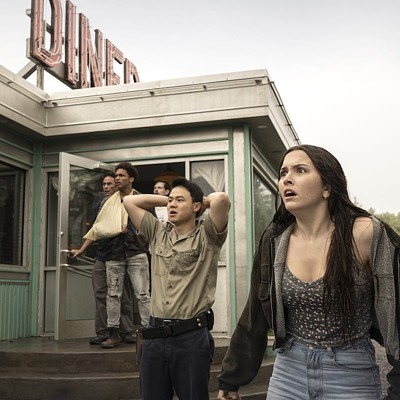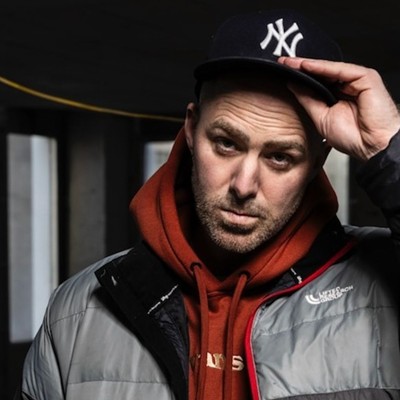Nothing is inherently gay about 16 Blocks or The Three Burials of Melquiades Estrada, but that shouldn’t make either confusing. Both movies are about the bonds of adult male friendship and the facade of machismo. In 16 Blocks, Bruce Willis is the typical cranky hero that defined his past action hits, except this time he has even more years and battle scars on him. The opening scenes, where Willis (as detective Jack Mosley) copes with a stressful workday and a raging hangover, unfold a lot like Die Hard with a Vengeance. But Richard Donner’s film surprises in displaying more interest in character relations than bombast. Required to escort a witness (Mos Def) across 16 New York blocks from a prison to a courthouse, Mosley’s day gets harder when the duo are hunted by corrupt cops. Mos Def’s Eddie Bunker is a possibly autistic eternal optimist who only wants to open his own bakery. His good vibes at first rub Mosley the wrong way. As 16 Blocks is really an ode to male sentiment, Mosley’s daylong excursion with Bunker has a lasting effect on his own outlook. Events move at an almost real-time pace. For a while, 16 Blocks builds with compelling intrigue and humour. The second act becomes disoriented just as the movie needs an extra kick of momentum. Donner’s mid-level action film hasn’t the left-field wit of David R. Ellis’ Cellular, but it’s heightened by two very realized performances. The rapport between Bruce Willis and Mos Def is strong enough that a potentially goofy final scene becomes a perfect end note.
The Three Burials of Melquiades Estrada
Tommy Lee Jones has cast himself as Clint Eastwood in The Three Burials of Melquiades Estrada. As the Western antihero clinging to notions of honour and tradition, Jones gets to be at once gruff and soulful. He plays rancher Pete Perking, who kidnaps the border patrolman Mike Norton (Barry Pepper), who accidentally shot and killed his friend. Together they transport the decaying corpse to his requested burial ground. An overabundance of characters and timeline fractures stalls the first half-hour in the pseudo-complexity of writer Guillermo Arriaga’s 21 Grams. But Jones avoids the forced documentary look of that film, focusing on the emotive connection of vast desert landscapes and human weakness.
Ultraviolet
It isn’t enough to be inconsequential. If escapism isn’t enjoyable, there’s nothing to escape to. The miscalculation of Ultraviolet reduces the big screen experience to an Xbox-generated approximation of a film. The premise of Ultraviolet is full of the same sort of self-absorbed rules and convolution that plague Night Watch. It’s never intriguing because it’s never inviting. Writer and director Kurt Wimmer (Equilibrium) drops viewers into a world where a blood war rages, domination is a controlling disease and samurai swords are still the coolest thing ever. The catch is there’s no reward for paying as much attention as Ultraviolet demands. What strives to be visually kinetic mainly attains drowsiness and eye-strain. Even when Wimmer lands a strong visual idea — reflections in sunglasses morphing into the real article, a motorbike effortlessly driving across a building’s vertical exterior — the environments aren’t real enough to be thrilling. Everything in Ultraviolet looks bright and pasty, even Milla Jovovich. The appearance is closer to the bland artificiality of Sky Captain rather than the vibrant artificiality of Torque. After TV’s Buffy the Vampire Slayer busted prejudice, dignified female action roles never caught on at the movies. Despite the preponderance of titles like Ultraviolet, Aeon Flux, Tomb Raider, Catwoman, Charlie’s Angels and Elektra, their target audience remains sex-starved 13-year-old boys, and even they get let down in the end. There’s no urgency here: There’s nothing ultra about it.
Send all ultra email to: [email protected]













